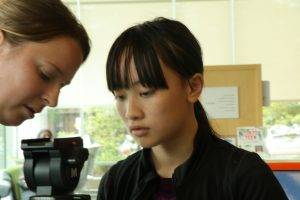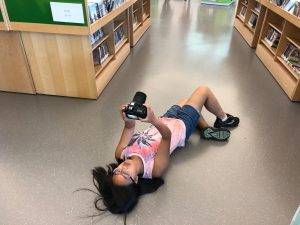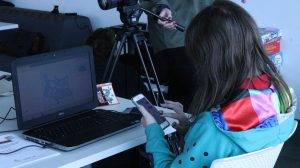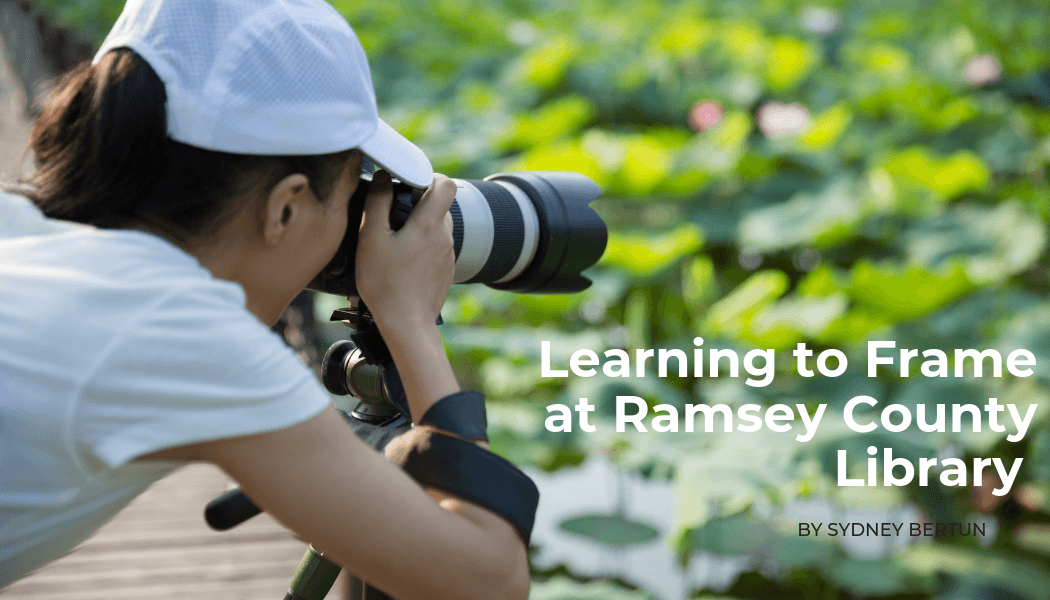In my experience, photography is usually pretty popular with teens. It’s also very accessible, even for instructors who lack resources, because most kids have smartphones with cameras these days.
Of course, if you really want to go in depth and teach some of the “hard tech skills” involved with photography, you will need a more expensive camera (for my workshops we use Canon 80D DSLRs).
When I teach, I encourage youth to experiment with the f-stop, white balance and frames per second. Using a DSLR also allows them to practice zooming in & focusing shots with a professional lens.

But, even without the expensive equipment, you can still get students engaged in creative framing exercises. My favorite activity for doing this is a photography scavenger hunt. The goal of this activity is to get your students using a camera in new ways (read: not just striking poses for fun).
Side note: this is also an ideal way to build up to cinematography, because it removes some of the moving parts (ha ha, but really) that make framing a lower priority when you are doing video production with youth.
The Scavenger Hunt:
- Point the camera up: take a picture of something above you
- Point the camera down: take a picture of something below you
- Pick one object and take two photos: one from far away and one up close.
- Pick one object and take two photos: one in black and white and one in color.
- Take a picture of lines. Lines are everywhere! Think sidewalks, fences, bricks, shelves…
- Faceless portraits: find a partner, take a photo of them that does not have their face in it.

Review & Reflect:
After everyone finishes, we go through the photos together and talk about them. The goal of this is to encourage intentionality. The accessibility of photography with phones and digital cameras means that most teens are used to taking pictures without much thought.
For this activity, it’s not necessary for them to have an artist statement for every photo, but I like to ask them some questions to get them thinking intentionally about framing choices.
For example, for numbers 2 and 3, I will ask the photographer which photo they like better and why. When we look at the faceless portrait (number 6), I will ask how they chose to shoot their partner. How do you represent personality or mood without including someone’s face in the photo? When I come across a series of “mistake photos” I will ask which settings the photographer was playing with.

Create a Gallery:
At the library, we let each participant pick two favorites that get displayed in their “gallery” by the entrance to the teen room. This is a great way to give teens ownership of a space and also track their progress as photographers over time.

